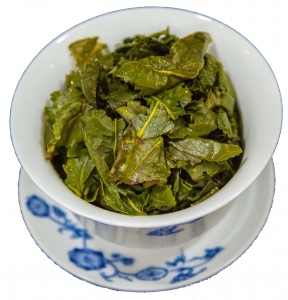Re-purposing used tea leaves
 In this age of “waste not, want not” we are always looking for ways to use things completely before they end up in the trash. Tea is no exception. In fact, used tea leaves have more value than many things we toss in the landfills. An extensive search of the Internet reveals thousands of blogs telling us what we can do with these seemingly worn-out jewels. Maybe there aren’t 5,000 uses, but there’s enough to squeeze out every last morsel of these life-giving by-products.
In this age of “waste not, want not” we are always looking for ways to use things completely before they end up in the trash. Tea is no exception. In fact, used tea leaves have more value than many things we toss in the landfills. An extensive search of the Internet reveals thousands of blogs telling us what we can do with these seemingly worn-out jewels. Maybe there aren’t 5,000 uses, but there’s enough to squeeze out every last morsel of these life-giving by-products.
Tea is green in many ways. Besides the obvious use as the world’s second most popular drink (water being number one), tea drinkers can be the most ecologically-minded people on the planet. Let’s take a look at some of the clever ways we can re-purpose and even save money (to buy more tea, of course!) around the house.
Tea Tips from Steve Graham, Hometalk.com
Clean mirrors and windows: Tea can remove stubborn, greasy fingerprints from glass, and make it sparkle. Simply rub a damp teabag on the glass or fill a spray bottle with brewed tea.
Get rid of fishy smells: Rinse your hands with tea after eating or preparing fish (or other stinky foods) to eliminate odors.
Prevent fleas: Tea is also rumored to help prevent fleas, so sprinkle some dry used tea leaves around pet bedding.
Soothe a sunburn: Wet teabags can soothe sunburns and other minor burns. For a full-body sunburn, soak in a tea bath.
Soothe tired eyes: Warm, wet teabags can reduce puffiness and soothe pain around tired eyes – and teabags on your eyes look a little less ridiculous than cucumber slices.
Cure acne: Some acne sufferers swear by washing their faces with green tea to cure or reduce their acne.
Improve breath: Gargling with strong tea can help reduce halitosis
Add to compost: Pouring strong tea into a compost bin will help speed up the process and encourage more friendly bacteria to grow, improving the compost.
Dye fabrics: Green and black teas have long been used in dyes for fabric and paper, particularly for generating a beige faux- antique look.
Dye hair: Brewed tea also is a good natural hair dye. Mix rosemary and sage into dark black tea and let the mixture stand overnight. Strain the mix and thoroughly work it into your hair. Repeat as needed for the desired color.
Repel mosquitoes: Burning tea leaves is said to repel mosquitoes with none of the side effects of chemical bug sprays.
More Tea Tips from yayateahouse.co.nz
Use as incense: Use either a Japanese tea-leaf-burner (cha kouro) or an old skillet on the stove with low heat to roast the used leaves and get them smoking slightly. Not only does this smoke have a nice aroma, it is also very effective in absorbing and eliminating bad odors in your house.
Soothe sunburned skin: Wrap used, damp tea leaves in a cloth and press or gently rub on sunburned skin. The tannic acid in tea has a cooling effect and helps repair the skin.
Prevent rust in cast-iron kitchenware: Rub your cast-iron pans, pots or teapots (tetsubin) with used tea leaves. The antioxidants in tea react with iron and form a protective film that prevents the formation of rust.
Deodorize your refrigerator: Tea leaves are extremely efficient in absorbing odours (that’s why you should keep high quality tea in an air-tight container). Put used tea leaves in a bag and place it in your refrigerator to get rid of bad odors
Make a tea pillow: Stuff used tea leaves into a pillowcase. Granted, you’ll have to save the leaves of your tea for a little while until you have enough to fill a pillowcase, but the Chinese belief that tea-stuffed pillows soothe headaches, relieve insomnia and reduce blood pressure. The aroma of the tea leaves also acts as a natural sleep enhancer.
Searching Google for “uses for tea leaves” returns 5,460,000 results. Surely you can find 5,000 uses for those tea leaves. Now, pardon me while I do further research on dyeing gray hair.

Leave A Comment